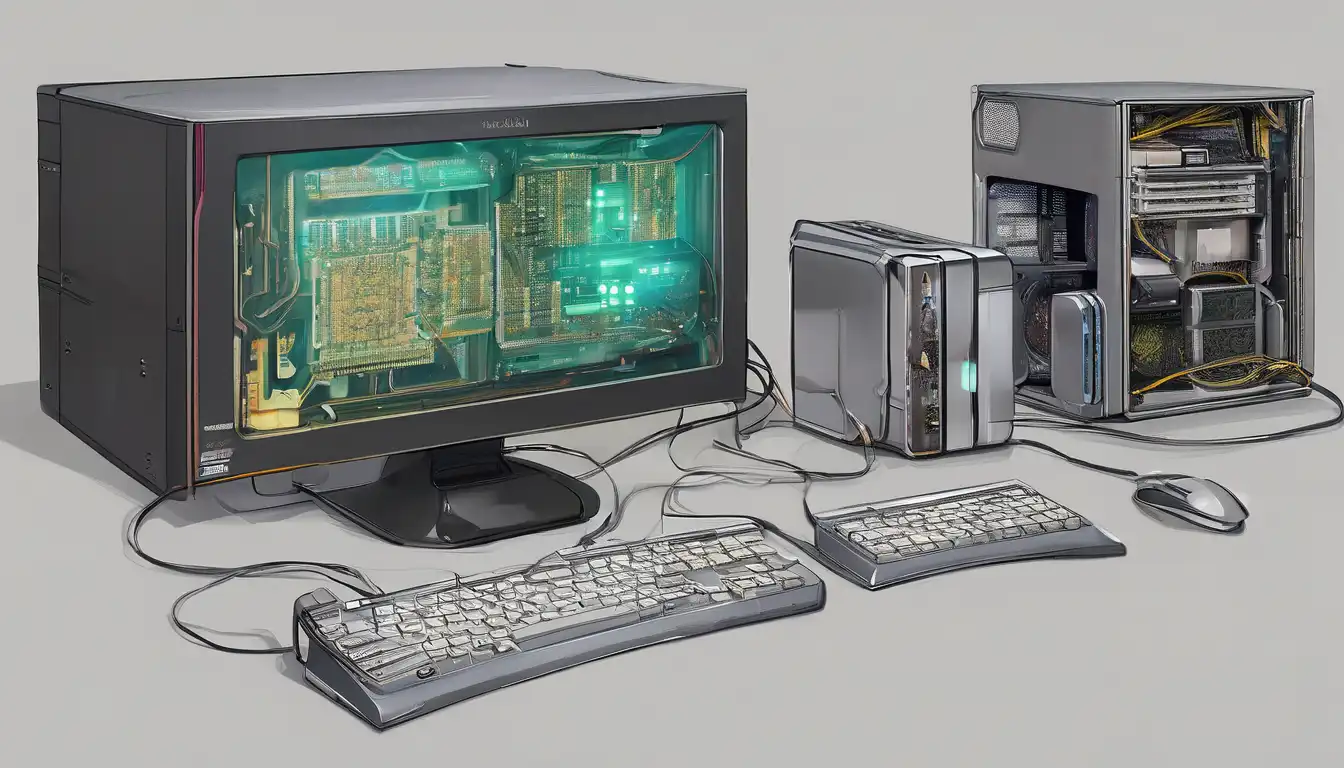Revolutionary Advances in Computer Hardware Technology
The computer hardware landscape is undergoing unprecedented transformation, with innovations emerging at an accelerated pace that's reshaping how we interact with technology. From quantum computing breakthroughs to AI-optimized processors, the latest developments are pushing the boundaries of what's possible in computing performance and efficiency.
Next-Generation Processor Technologies
Processor technology continues to evolve beyond traditional Moore's Law limitations. The latest innovations include 3D stacking architectures, where multiple layers of transistors are stacked vertically, dramatically increasing transistor density without requiring smaller manufacturing processes. Companies like Intel and AMD are implementing chiplet designs that combine specialized processing units on a single package, optimizing performance for specific workloads while maintaining energy efficiency.
Quantum computing processors represent another frontier, with companies achieving significant milestones in qubit stability and error correction. While still in experimental stages, these processors promise to solve complex problems that are currently intractable for classical computers. The integration of AI-specific accelerators directly into CPUs is also becoming standard, enabling real-time machine learning applications without requiring separate hardware components.
Memory and Storage Revolution
The memory hierarchy is being reimagined with technologies like Compute Express Link (CXL), which allows for more efficient communication between CPUs and memory. This innovation reduces latency and increases bandwidth, particularly beneficial for data-intensive applications. New non-volatile memory technologies are bridging the gap between traditional RAM and storage, offering persistent memory that maintains data without power while providing near-RAM speeds.
Storage technology has seen remarkable advances with PCIe 5.0 SSDs delivering unprecedented read/write speeds exceeding 14,000 MB/s. These drives leverage advanced NAND flash architectures and improved controllers to achieve performance levels that were unimaginable just a few years ago. The emergence of storage-class memory promises to further blur the lines between memory and storage, potentially revolutionizing how systems handle data processing.
Graphics and Display Innovations
Graphics processing units (GPUs) have evolved beyond gaming and professional visualization to become essential for AI training, scientific computing, and real-time rendering. The latest GPU architectures feature dedicated AI cores, real-time ray tracing capabilities, and advanced upscaling technologies that deliver photorealistic graphics while maintaining performance efficiency. These advancements are crucial for emerging technologies like virtual reality and metaverse applications.
Display technology has kept pace with hardware improvements, with microLED displays offering superior brightness, contrast, and energy efficiency compared to traditional LCD and OLED technologies. High refresh rate displays reaching 360Hz and beyond are becoming mainstream, providing smoother visual experiences for both gaming and professional applications. The integration of eye-tracking technology and variable refresh rate capabilities further enhances the user experience.
Cooling and Power Management
As hardware components become more powerful, thermal management has become increasingly critical. Advanced cooling solutions including vapor chamber technology, liquid cooling systems, and phase-change materials are being implemented to maintain optimal operating temperatures. These innovations allow hardware to sustain peak performance for longer durations without thermal throttling.
Power efficiency has become a primary focus across all hardware categories. New power delivery systems featuring digital voltage regulation and advanced power states enable components to dynamically adjust their power consumption based on workload demands. This not only reduces energy costs but also extends the lifespan of hardware components by minimizing heat generation and electrical stress.
Connectivity and Peripheral Advances
The latest connectivity standards are transforming how devices communicate and interact. WiFi 7 technology offers multi-gigabit wireless speeds with reduced latency, while Thunderbolt 5 provides unprecedented data transfer rates for external devices. These advancements enable new use cases for external GPUs, high-resolution displays, and fast storage solutions that were previously limited by bandwidth constraints.
Peripheral technology has seen significant innovation with the development of haptic feedback systems that provide tactile responses, adaptive triggers that change resistance based on in-game actions, and eye-tracking technology that enables new forms of interaction. These developments are creating more immersive computing experiences across gaming, professional applications, and everyday computing tasks.
Future Outlook and Emerging Trends
The hardware industry is poised for continued rapid evolution with several emerging trends shaping the future landscape. Neuromorphic computing, which mimics the human brain's neural structure, promises to revolutionize AI processing efficiency. Photonic computing, using light instead of electricity for data transmission, could overcome current limitations in speed and energy consumption.
As we look toward the future, the integration of hardware and software will become increasingly seamless, with systems automatically optimizing performance based on usage patterns and application requirements. The convergence of these technologies will enable new computing paradigms that were previously confined to science fiction, fundamentally changing how we interact with digital systems and process information.
The pace of innovation in computer hardware shows no signs of slowing, with each breakthrough opening new possibilities for computing power, efficiency, and capability. Staying informed about these developments is essential for anyone involved in technology, from IT professionals to enthusiasts looking to build or upgrade their systems.
